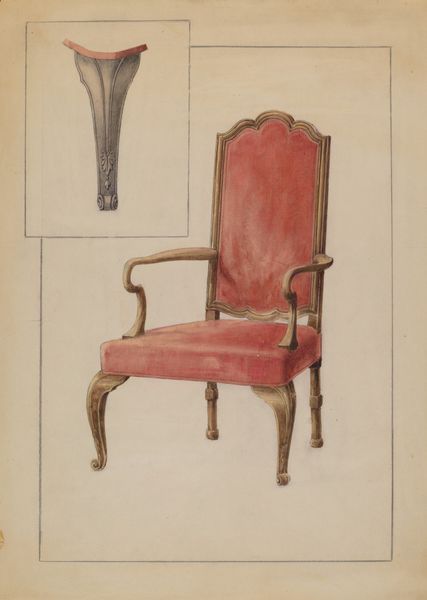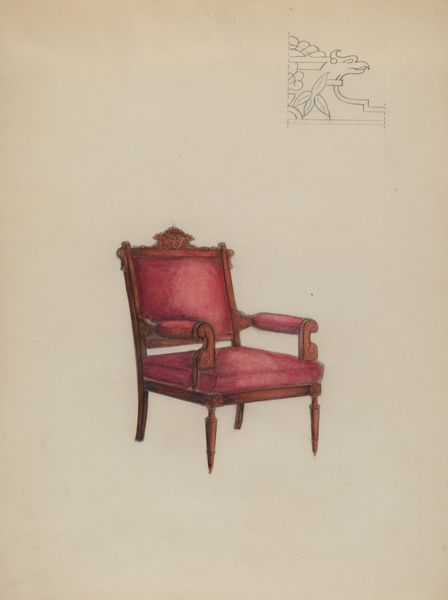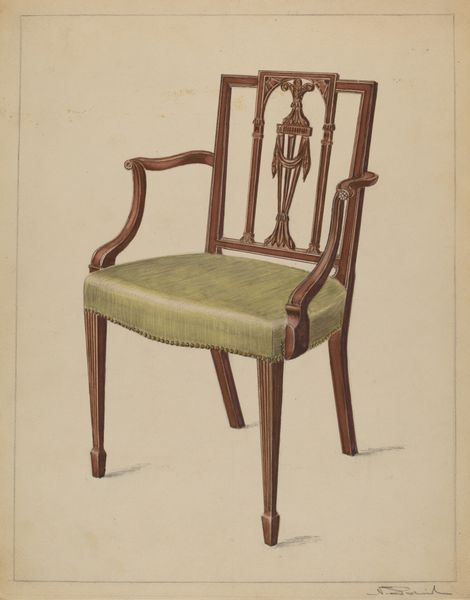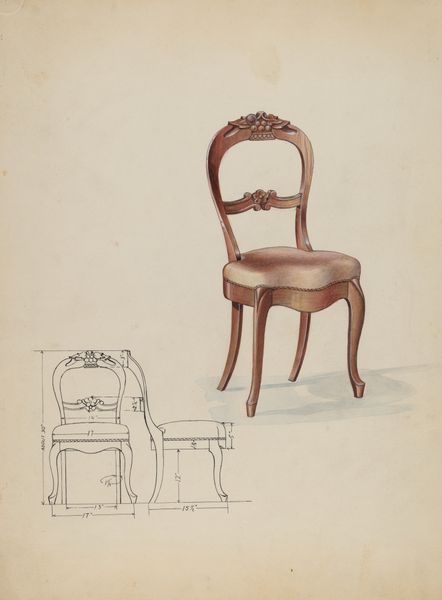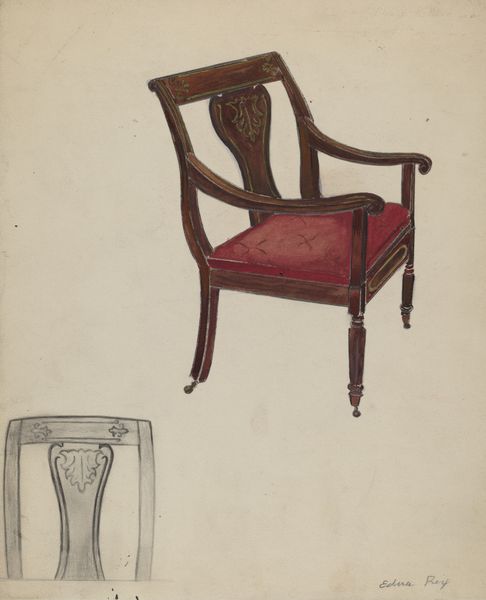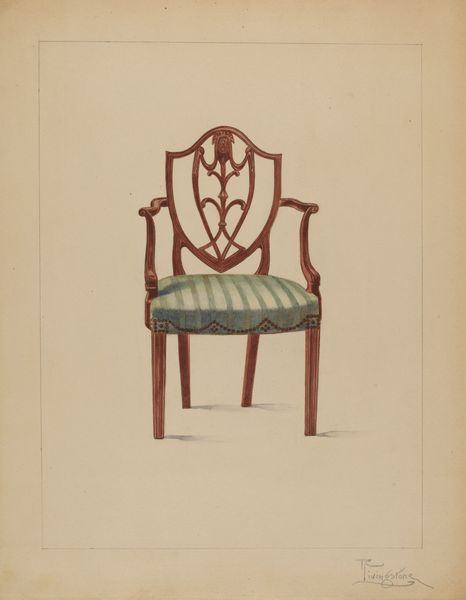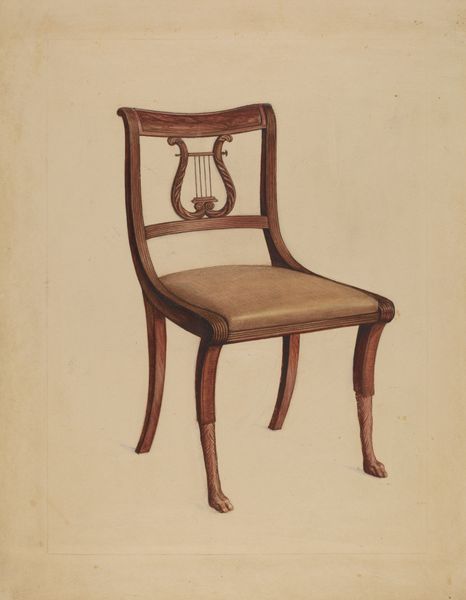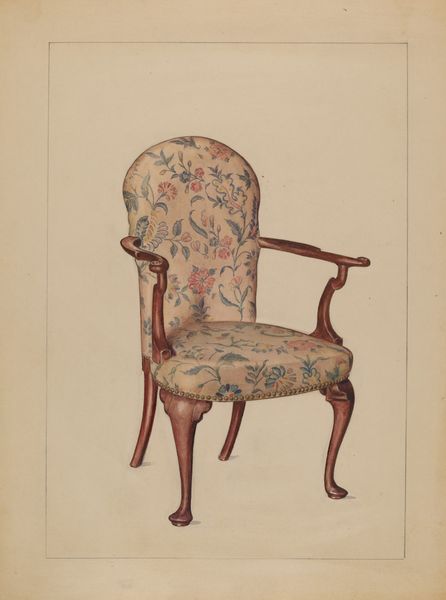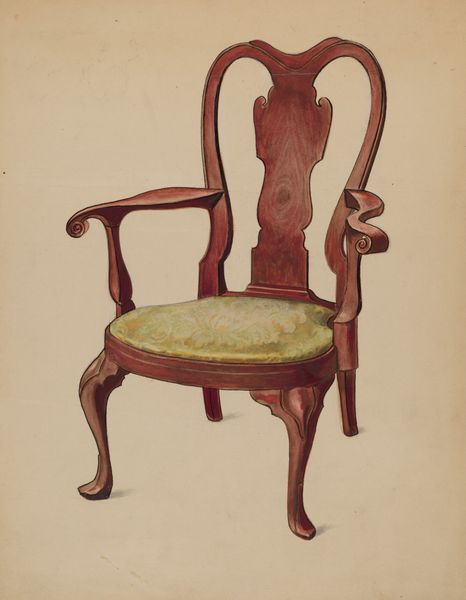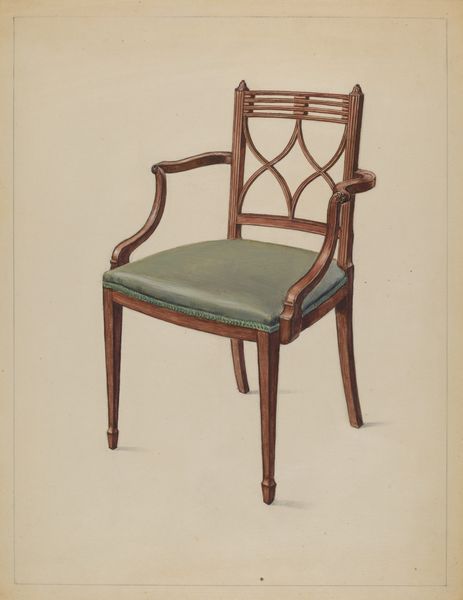
drawing, watercolor
#
drawing
#
furniture
#
watercolor
#
watercolour illustration
#
academic-art
#
watercolor
Dimensions: overall: 30.4 x 22.7 cm (11 15/16 x 8 15/16 in.) Original IAD Object: none given
Copyright: National Gallery of Art: CC0 1.0
Curator: We're looking at "Armchair," a watercolor and drawing attributed to Carl Weiss, created sometime between 1935 and 1942. Editor: It’s quite charming. A really nice composition with those soft watercolors, almost looks inviting with its rosy color. Curator: Absolutely. The drawing gives a clear visualization of an armchair, but I find it equally fascinating to think about what it represents in terms of labour, particularly around decorative arts of this period. Consider the work, skill, and conditions necessary to craft an actual armchair like this—who made it? What were their working lives like? What social class does this type of chair reflect? Editor: And who were those chairs for? Because what’s implied here is access—the chair is not merely functional; it suggests leisure and a degree of economic freedom during the tail end of the depression. There’s an implied social hierarchy when viewing an item of furniture meant for relaxing when the country at large struggled with accessibility of stable housing or living wages. This visualization speaks to the desire for aspiration, even if just realized through design. Curator: Precisely! It highlights a relationship between social class and design in pre-war America. The very materials—the wood, the textile—and the techniques used to create it all speak to a certain level of economic infrastructure and consumer desire that we should acknowledge in order to contextualize the subject beyond the representational, while a seemingly benign furniture piece hints at far broader social realities that determined access to basic comforts like well-made furniture. Editor: Exactly. Moreover, the watercolor itself becomes an interesting subject. Who was doing this watercolour, and why? I wonder about their background. Were they imagining new social roles where everybody would be comfortably housed? How much was access part of the motivation of sketching it? Curator: A tantalizing proposition, and a necessary layer to this discussion that encourages us to engage not just with what’s depicted but the material implications of it, and where we see those types of social stratifications and the implications of labor existing in society today. Editor: Indeed, an apparently straightforward visualization is charged with socio-economic dynamics. Viewing is just the starting point for discussion.
Comments
No comments
Be the first to comment and join the conversation on the ultimate creative platform.
